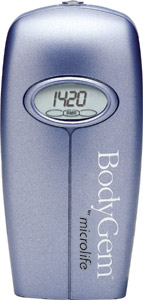The Harris Benedict Equation to calculate BMR – Basal Metabolic Rate was developed in 1919.
The first point to be made is that our bodies have certainly changed a lot since 1919, which adds more variables to the Harris Benedict Formula.
The Harris Benedict Formula shows how to calculate BMR, but this is only an estimate based on age, height and weight. Then activity level is added to estimate daily calorie intake needs.
While the Harris Benedict Equation can estimate Basal Metabolic Rate, it’s not designed for people who have excessive body fat and subjects of the same height and weight can vary greatly in their caloric needs.
The problem is that the Harris Benedict Calculator doesn’t factor in variables such as:
- Thyroid issues, which can reduce metabolism
- Certain hormones can increase or decrease metabolism.
- Body composition – More muscle increases metabolism, less muscle decreases metabolism
- Certain supplements can increase or decrease metabolism.
- Pharmaceuticals – Prescription and OTC drugs can increase or decrease RMR.
For the best care, the American Dietetics Association recommends using Indirect calorimetry to measure RMR for the most accurate assessment of nutritional needs.(9)
Instead of estimating BMR and daily calorie intake, you can scientifically measure a clients Resting Metabolic Rate (RMR), with the BodyGem indirect calorimeter.
In 5-10 minutes, you can take a snapshot of your clients Metabolic Fingerprint.
The metabolic effects of thyroid and hormone issues, body composition, and other variables, are all captured during a BodyGem measurement.
Then you can use your clients unique resting metabolic rate as the foundation of your recommendations for their daily calorie intake.
Here is the validation study for the BodyGem / MedGem indirect calorimeter.
Here are some BodyGem case studies of facilities that are using the BodyGem and BodyGem Analyzer software:
To get more information:
- Review the BodyGem System purchase options
- Call me directly at 720-431-1461
- Or leave a voicemail at 1-866-285-8296 and I’ll call you back
I wish you the best of health!
David Wilcoxson
1. RMR is calculated using the Weir Equation and a constant RQ value of 0.85 (RMR=6.913xVO2), Weir, J.B., New Methods for Calculating Metabolic Rate with Special Reference to Protein Metabolism. J Physiol, 1949. 109: pages 1-9.
2. Nieman, David C., Trone, Greg A. and Austin, Melanie D.,”A new handheld device for measuring resting metabolic rate and oxygen consumption.” Journal American Dietetic Association 2003:103 (May), 588-593
.3. Stewart, C., Branson, R., Goody, C.M., “A Comparison of Two Systems for Measuring Energy
Expenditure”. Journal of Parenteral and Enteral Nutrition 2005:29 (May/June), 212-217.
4. Storer, T.W., et al. “Validation of the MedGem Device for Measurement of Resting Metabolic Rate”, Abstract May 2004 ACSM conference, Indianapolis, IN.
5. James R. Mault, et al. “Efficacy of a Resting Metabolic Rate Based Energy Balance Prescription in a Weight Management Program” Nutrition Week, San Diego, CA. Feb. 2002
6. Foster, G. et al. (1988). Resting Energy Expenditure, Body Composition, and Excess Weight in the Obese. Metabolism, 37(5), 467-472.
7. HealtheTech Technical Report #2 – Comparison of the BodyGem to a Mechanical Simulation Device.
8. Melanson, E. L. et al., Validation of the BodyGem Handheld Calorimeter. Intermational Journal of Obesity 2004:28, 1479-1484
9. Frankenfield, D., Roth-Yousey, and C. Compher, Comparison of Predictive Equations for Resting Metabolic Rate in Healthy Nonobese and Obese Adults: A Systematic Review. J Am Diet Assoc., 2005. 105: p. 775-789.
